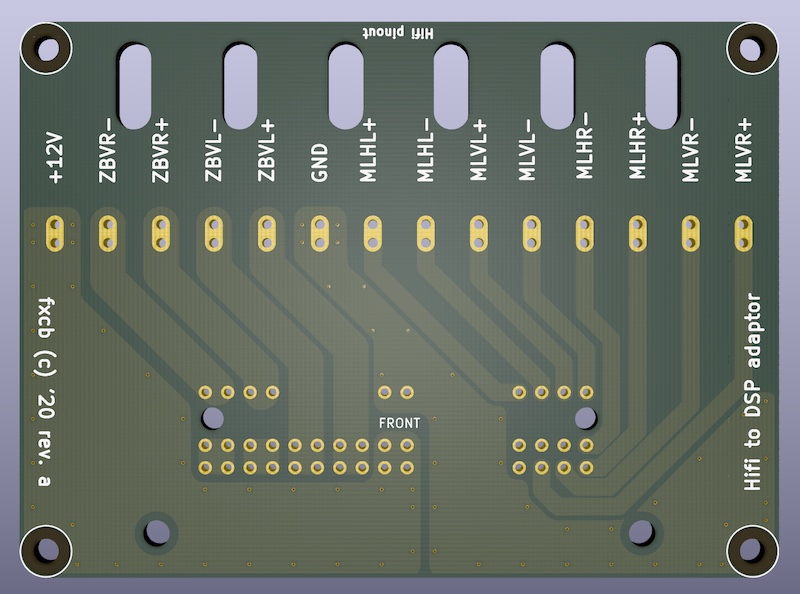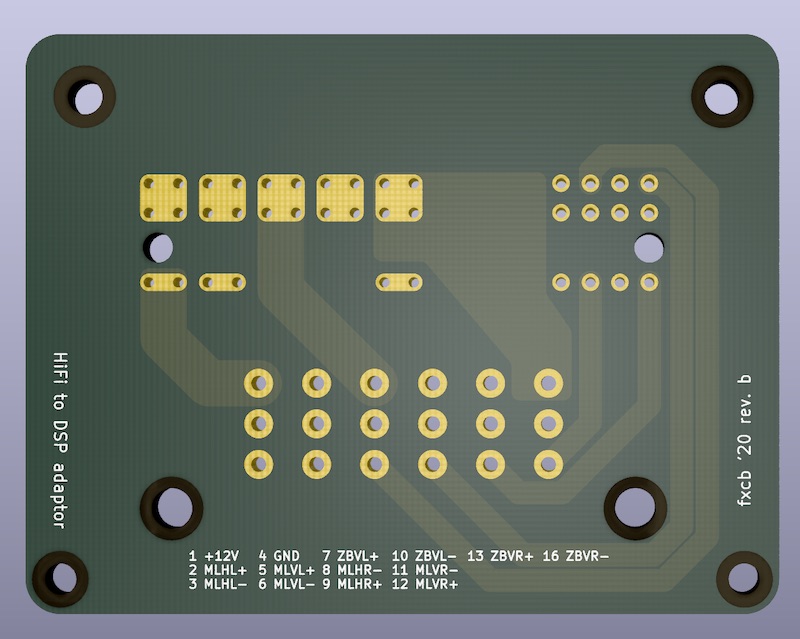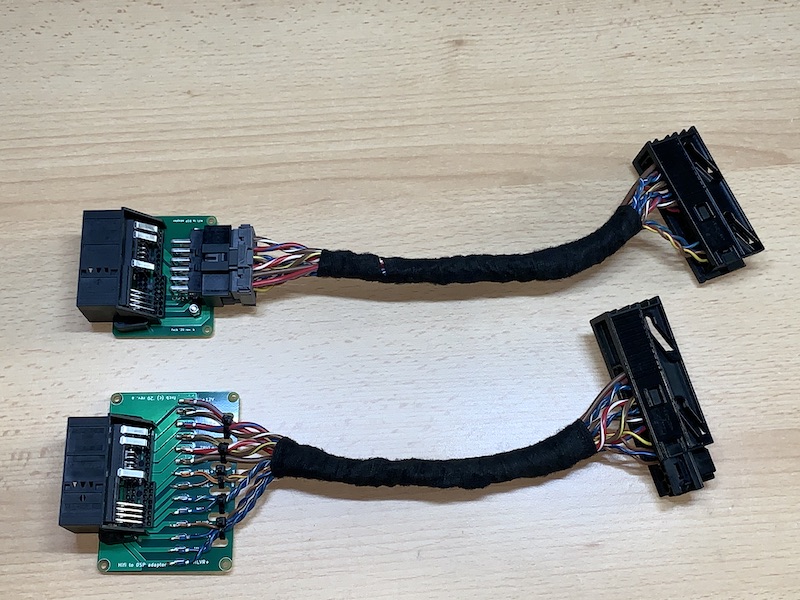01
07
projects beyond the FabAcademy
08
PCB design | BMW HiFi to Logic7 DSP adaptor
09
HiFi to Log...what? Don't worry. Let me explain the situation.
Due to the change of my factory equipped BMW CIC navigation system to an android device, I needed a reliable LTE hotspot with external antenna in my car. I chose the MikroTik wAP ac LTE kit with the mANT LTE 5o antenna.
As I retrofitted this to my car, there were no problems, until I went to an area with very bad signal quality. I recognized some bad GSM buzz interference on my speakers. The reason why this happened was not really hard to find.
My car is original equipped with an 180 watts analog amplifier. It's mounted in on the left side in my trunk. Just 20 cm beneath my retrofitted LTE hotspot.
This amp is okay, sounds not bad but - it's analog. This means: It has sensitive line-in inputs via copper cable, which were routed through the whole car. They act like an huge antenna and catch the electromagnetic radio waves from the the LTE hotspot. They overdrive the whole signal and I'm not able to turn the volume down, to prevent my speakers from freaking out.
Small problem, huge effect. While thinking about this problem, the only proper way to fix this problem, was to change the original amp to an original DSP amp. I bought a complete system (which brought me from 180 watts to 425 watts and from 8 to 13 speakers) to fix this problem. The special feature of this DSP amp is the wiring via optical fiber MOST. This means: there are no analog signals from the headunit to the amp. It's an digital signal via optical fibre on the existing MOST bus in my car.
As I wanted the most cleanest possible retrofit without cutting my original harness, I had a problem. There are absolutely no plug&play solutions available on the market. Every existing cable must be modified or changed. Aside this fact, every existing cable has a too small cable cross-section.
What's next? - Developing the most expensive and most satisfying solution by myself.
meh.
After some research, I've found some sobering information. The plugs are OEM only and there is no chance to get them via a typical electronic distributor like Mouser. The good news: The plug on the DSP amp side is available via BMW directly, the 42 pin plug on the other side is available as THT mounting part from a reseller. Just use Google, as I'm not sure if it's okay to link them.
Google also has the information which cable is power, ground and all the speakers. I had to compare the wiring from the different amps to verify a possible solution and found a way to wire it without cutting the original harness, while adding the missing cables to the new speakers. So this solution is removeable without any trace (okay, I had to cut 2 large holes in my headlining).
After some KiCad fun horror (every time I use a new KiCad version I find a new critical bug - this time: the PCB circle tool crashed KiCad reproduceable) and a bit calculating the track sizes to handle the power without getting problems, I had a shiny new PCB design.

Got the PCBs a week later but I while soldering the connector, I had the idea to make revision b - a smaller one. As usual in engineering electronics, you need a at least a second revision. This new revision includes a second connector, which is much more convenient than the crimp-soldering terminals.

As you can see, the revision b is nearly the half size of revision a PCB. These are the finished, working boards.




This work by Daniel Bruns is licensed under a Creative Commons Attribution-NonCommercial-ShareAlike 4.0 International License.